Your essential 4WD Cape York adventure guide
With the dry season (May to October) nearly upon us again, here’s everything you need to know to survive Cape York in your 4WD!
Advertisement
With the dry season (May to October) nearly upon us again, here’s everything you need to know to survive a 4WD Cape York adventure!
My first trip to the Cape was in a petrol 80 Series LandCruiser, with a week’s worth of planning, not a huge amount of knowledge, more than a few fears about what it would actually be like and whether we’d make it home in one piece.
To save you becoming prematurely grey, and hopefully wax some of the fears away, we’ve thrown together this hard and fast guide on what you can expect, what to keep an eye out for, and how to survive a 4WD trip to Cape York.
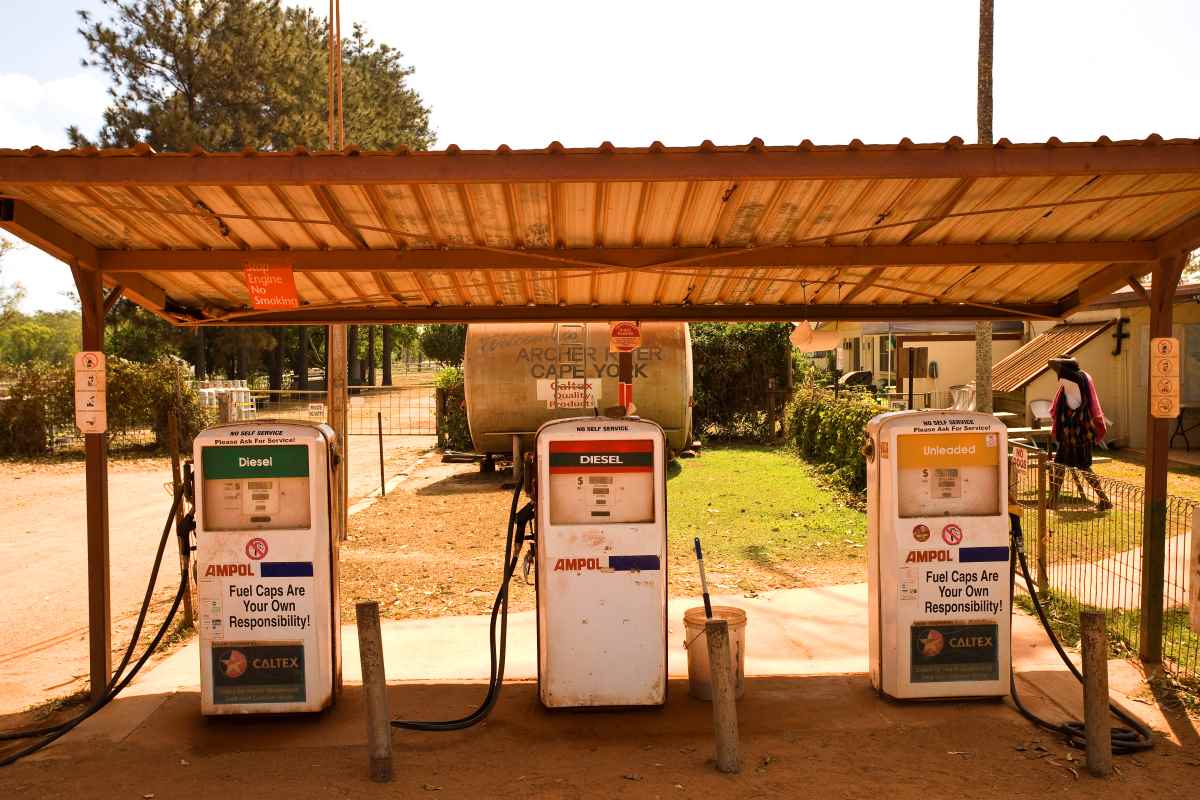
Despite what we thought, fuel was quite plentiful north of Cairns, albeit bloody expensive! Being in a petrol 80 sucking down 30L/100km, we had four jerry cans across the roof cage, and were having serious second thoughts about how often we could get fuel. Turns out, you’ll find fuel about every 300km at the longest stretch.
Yep, you’ll pay for it, as the further north you go, the more expensive it gets, but it is around. Rule of thumb here, if you see a fuel stop, look at putting fuel in. Also don’t rely on getting any fuel better than 91 octane – if you happen to own a supercharged, LSA-powered 4X4, you’re gonna have a bad time.
So the fuelling your 4WD side of things isn’t nearly as bad as you’d think – you’ll find it most places in Cape York. However, if you’re doing the Tele Track (and I mean really, why else are you here?) then you’ll need to fuel up at Bramwell Junction Roadhouse, as the run up the Tele is slow, low-range, going. You’ll eat up a fair bit of ‘go juice’ just doing that.
Bamaga also has a local IGA / Foodworks store that you can get bulk supplies from too, once you’re north of the Jardine, Everything from vegies and meat, to tofu and bait, you’re covered. If you’re in a pinch, you’ll get most staples from the roadhouses too, including meat and vegies so you’ll not go hungry.
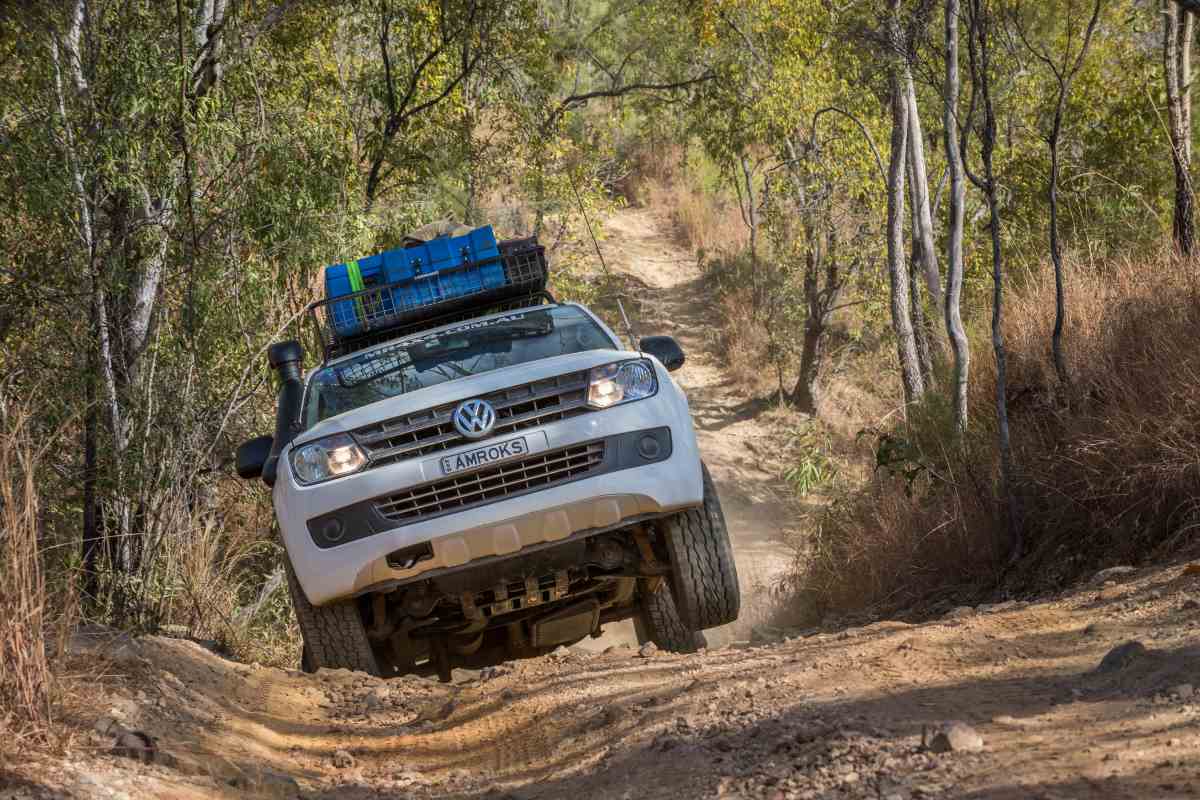
Okay, so there really is only the one ferry that crosses the mighty Jardine River. You will need to pay to cross on the ferry with your 4WD enroute to Cape York and it’s pre-purchase online or EFTPOS only. No cash. However, there have been some of the more adventurous that have gone a ways up stream and crossed it in their 4WD.
Personally, we opted for the nice, dry, ferry that you can’t get bogged on, and have to wade through chin-deep, croc-infested waters to get recovered from. It’s going to set you back 160 dollarydoos to get a return ticket for a single vehicle ($250 for towing a trailer or van).
As you’ve probably heard, there are limits on the amount of grog you can take into and have with you in the Cape. For the way up, you’re pretty well right until you hit the Jardine Ferry. Once you’ve crossed and you’re in the ‘Northern Peninsula Area’, there are some limits you need to be aware of.
The maximum amount of alcohol you can have in any one vehicle is:
This amount is per person on foot, or per vehicle, boat or aircraft regardless of the number of people in it.
If you’re planning on heading out to any of the specific communities off the beaten track, it’s best to check you’re not doing the wrong thing, as some of these are completely dry communities, and there’s no grog allowed.
Just on the off chance you happen to get caught with more than the allowed limits, you’re looking at a fine of up to $60,487 (375 penalty units) for a first offense!
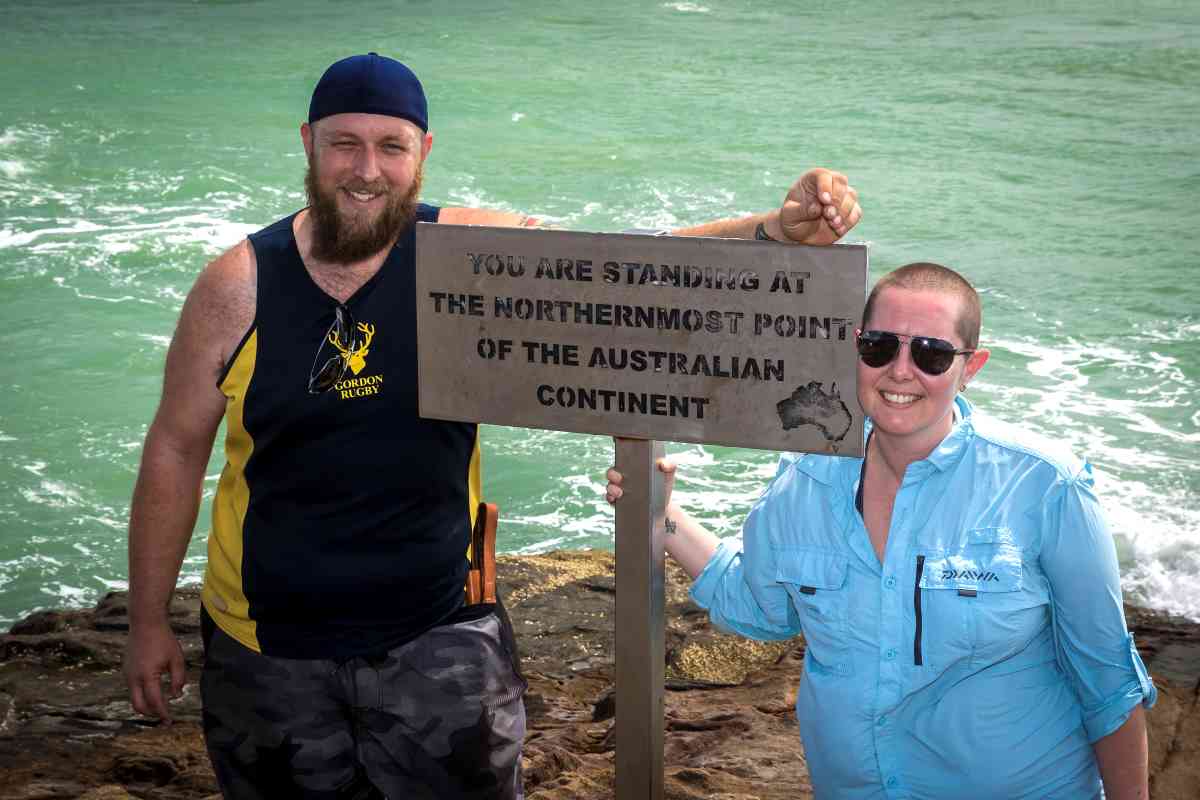
Let’s not beat around the bush. That’s why you’re up here, right? To conquer the mighty OTT with your 4WD and get a photo in front of ‘that sign’ at Cape York.
A bit of history first: the Cape York Telegraph Line was completed in 1887 and ran from Laura all the way through to Thursday Island. It was used for over 100 years, when in 1987 the line was removed, and replaced with microwave radio transmission towers. The part we’re interested in however, runs from Bramwell Junction Roadhouse in the south, crossing the Peninsula Development Road once, and ends at the Jardine River in the north.
There’s the two main sections, north and south, with a metric truck tonne of crossings, falls, creeks, swimming holes, and campsites along it. Cape York is not as challenging 4WD wise as you might think and to be honest, we were a little disappointed with how easy the vast majority of it was. There is still plenty to see and do along the track, with a couple of harder sections that may well require the running of the winch line, however most of these parts (think Gunshot Creek) can be bypassed and have the obligatory ‘chicken track’ to get you through if you don’t want to drive the mental parts.
Most of the crossings you’ll find have a solid bottom, and so long as you keep momentum, and don’t just ‘give it the jandal’, you’ll get across them all pretty easily. Our tyre pressures were down to 18psi while on the Tele, and that got us through everything with ease.
Where the southern section has the gnarlier bits of four-wheel driving, the northern section is where it gets really speccy. Pristine creeks, stunning falls and epic water crossings. If we could suggest one bit of the Cape you need to see aside from the sign, it’d be the northern half of the Tele Track.
Photographic proof you’ve made it to the Tip of Cape York with your 4WD is a requirement of anyone heading up to the Cape. I mean, if you don’t put a photo of the sign on your socials, did you even go? Something a lot of folks don’t know, is it’s about a 500m walk to the Tip from the carpark. The walk is over pretty rocky terrain up and over a hill. At low tide you can walk most of the way out around the sand flat – just be mindful of the crocs!
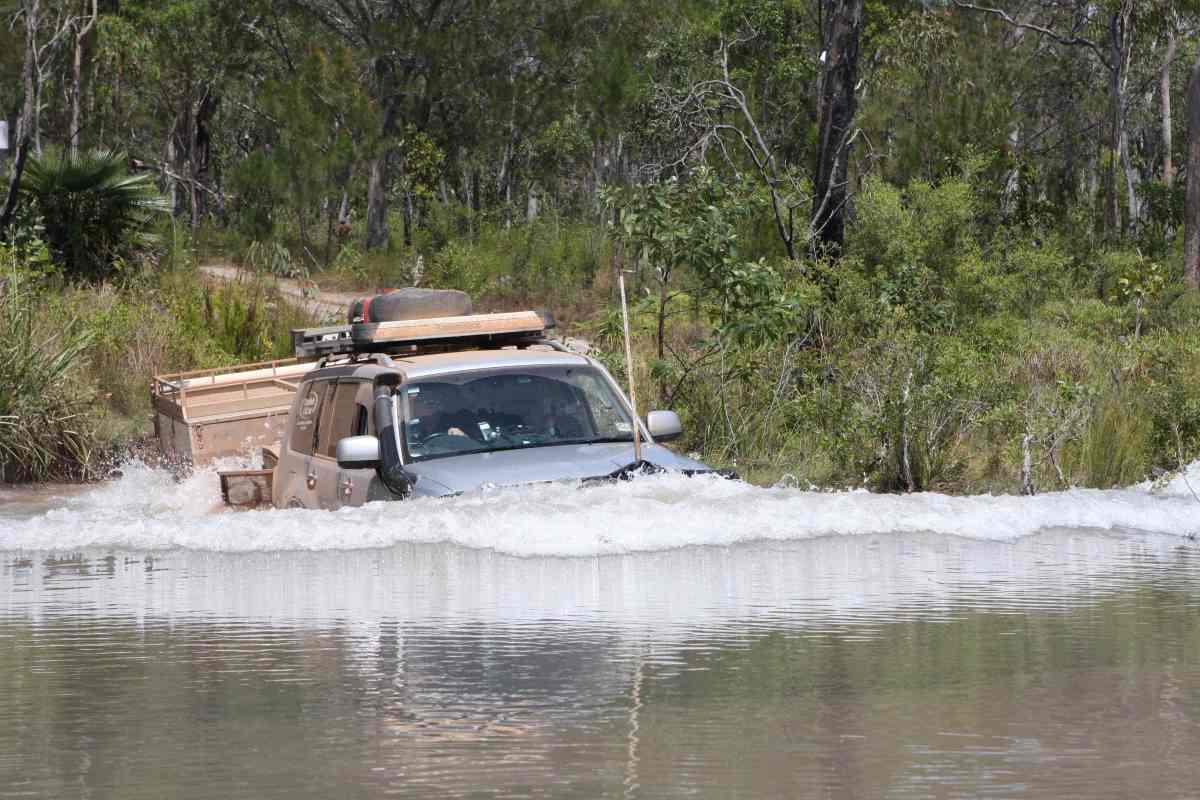
Actually, not that much. We did it with the absolute bare minimum – you could too. But having extra stuff certainly bloody helps. That said, if you’re just going to the Tip, and don’t want to tackle the OTT, you can (and people have) take a Corolla up there no sweat, just enjoy the corrugations!
As we said above, we tackled Cape York in a petrol-powered 80 Series 4WD, and we didn’t die. The old darlin’ had a two-inch lift, 33s, snorkel, temperamental winch, bull bar, and a rear bar that fell off halfway up the PDR. So long as you’ve got that, you’ll get through it. Anything above, well that’s just going to make it that much easier.
This is arguably the only real non-negotiable. Unless you’re not going to attempt the Tele, you’ll need a snorkel. Make sure it’s an actual snorkel – not a ‘raised air intake’. We had a Patrol along with us that was leaking water into the airbox from behind the Nissan badge riveted into the side of his factory ‘raised air intake’. Best bet – block the snorkel head and make sure it stalls the engine before you leave home.
Have a good quality one, service it and make sure it works before you start heading north. Also make sure you’ve got rated recovery points on your 4X4 too! There’s nothing quite like being stuck in water over the bonnet and the winch decides it’s had enough. No, really, it’s an awesome way to make new friends, who get to see you at your worst when you’re stuck, and your best when they rescue you!
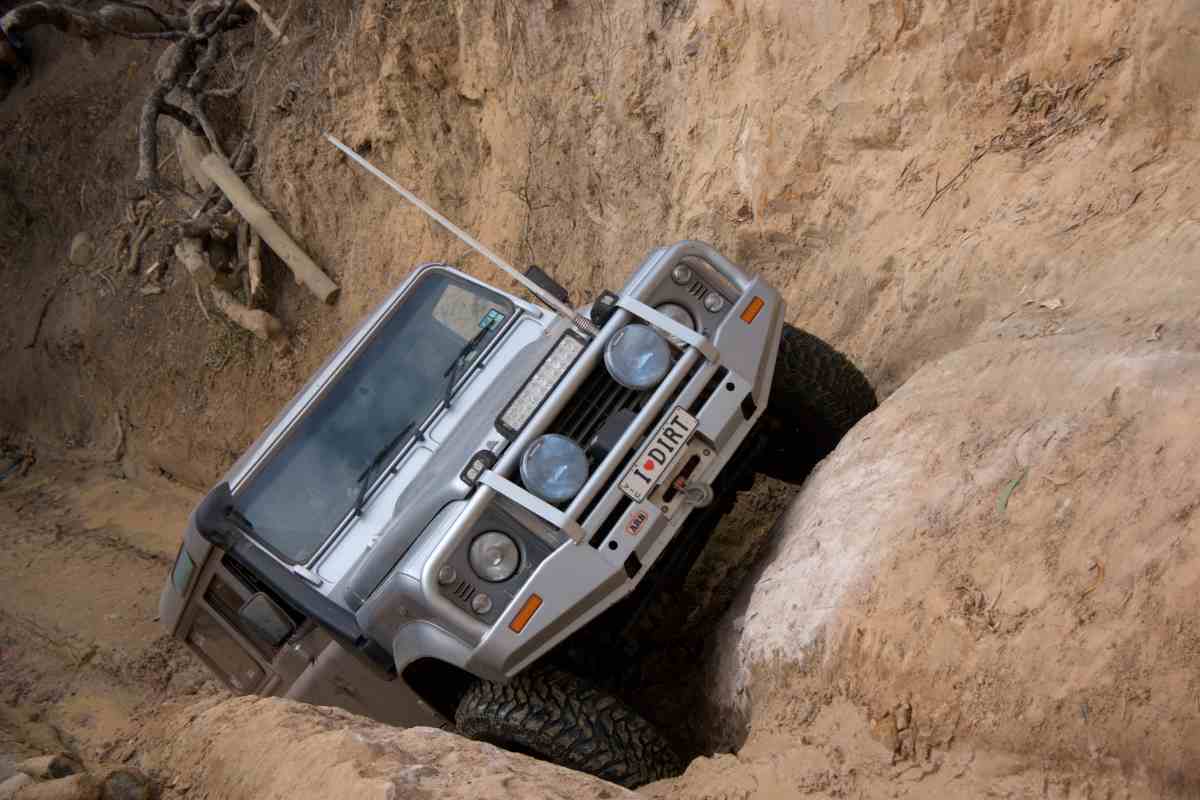
33-inch tyres are essentially a minimum for the OTT – not much with a standard-ish wheel track gets up there on less than that. So if you own a Zook, you can straddle everything, if you don’t, you’re going to want 285/75s or 33s.
Two inches of lift is a thing. Chances are you won’t fit the 33s under your 4WD without it, plus it gets everything just that much further out of the water – like sills, door jams, snorkels, 4WD occupants’ heads – you get the idea. A little more than this helps of course, but a lot more than this will see you on your roof.
Besides somewhere to stick your winch and lights, good solid bar work is a good, solid idea for a 4WD Cape York adventure. There’s plenty of wayward pigs up the Cape, and should you happen to meet one at any speed, you’re going to have a bad time – bull bar or not. So make sure you’ve got something to protect you and your rig as best you can. Also, make sure you get good quality bar work. There’s nothing quite like looking in the rear-view mirror and watching a lump of steel and a spare tyre bouncing down the PDR after you.
These kind of go without saying: make sure you’ve got somewhere solid to sleep, and something to keep the beer and food cold. A fridge that kicks the bucket isn’t the end of the world up here, you’ll get food within a few hours’ drive, but it would be a proper pain in the ass. Same goes for a good swag. A snapped pole or torn canvas won’t kill you but is just something you don’t want to have to worry about when you’re ticking this one off the bucket list.
Anything over and above these things is just gravy. You don’t need a brand-spanking new $130,000 diesel 4WD, you don’t need the latest and greatest swag, you don’t need the world’s angriest set of 37-inch muddies … but they sure would make life easier.
It’s an adventure – things are gonna go wrong, just try to limit how badly they can go wrong, and ALWAYS remember, the difference between adversity and adventure is just the way you’re looking at it.
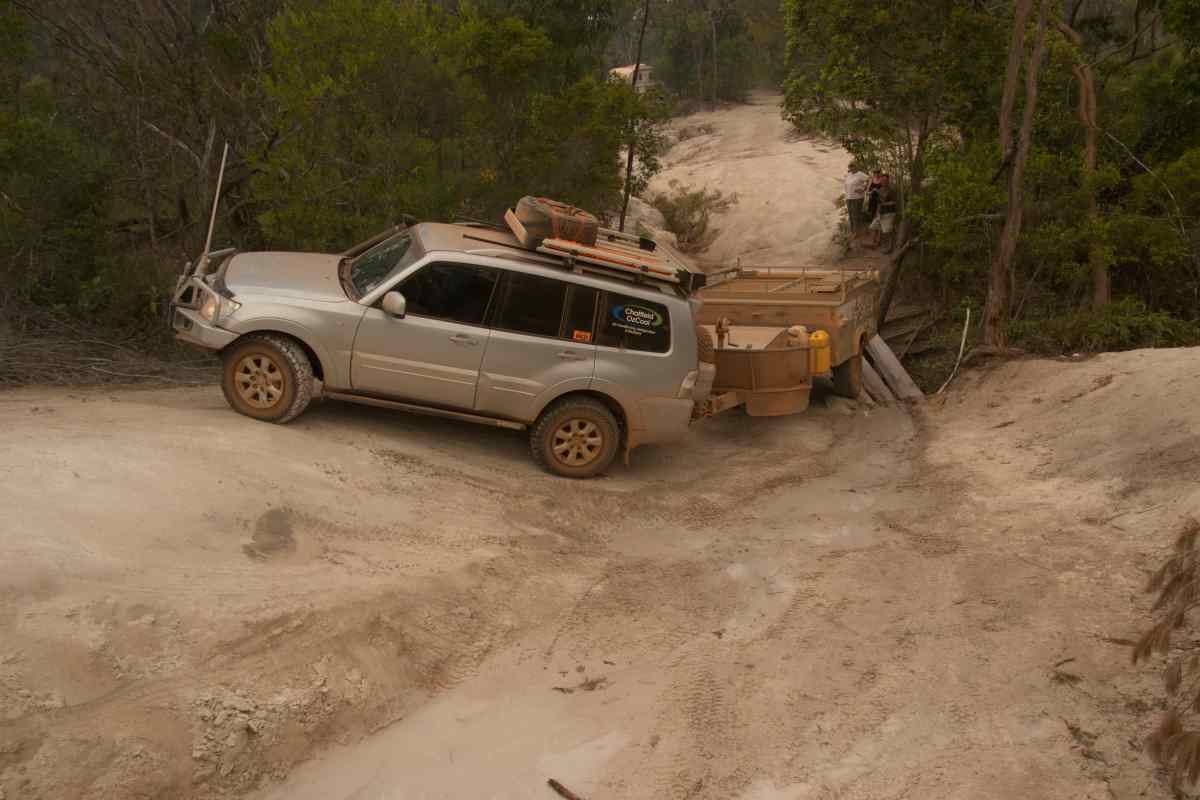
Spares wise, at a minimum you’re going to want drive belts and top and bottom radiator hoses. Without these, you’re stuffed. On the list of ‘if we’ve got room’, you want to throw spare CVs, an alternator, spare air filter, maybe a starter motor if you’re in an auto, wheel bearings, and anything that’s a known ‘weak spot’ on your 4WD. A roll of fencing wire is also a great addition to any 4WD because of the things you can fix with it – think exhaust mounts, radius arms, spring towers – it’s the heavy-duty version of cable ties.
On the tool front, you’re going to want the usual jack, tyre iron, set of sockets and spanners, pliers/side cutters, hub socket for your wheel bearings, and any other tool you’ll need to replace the spare parts you’ve brought along.
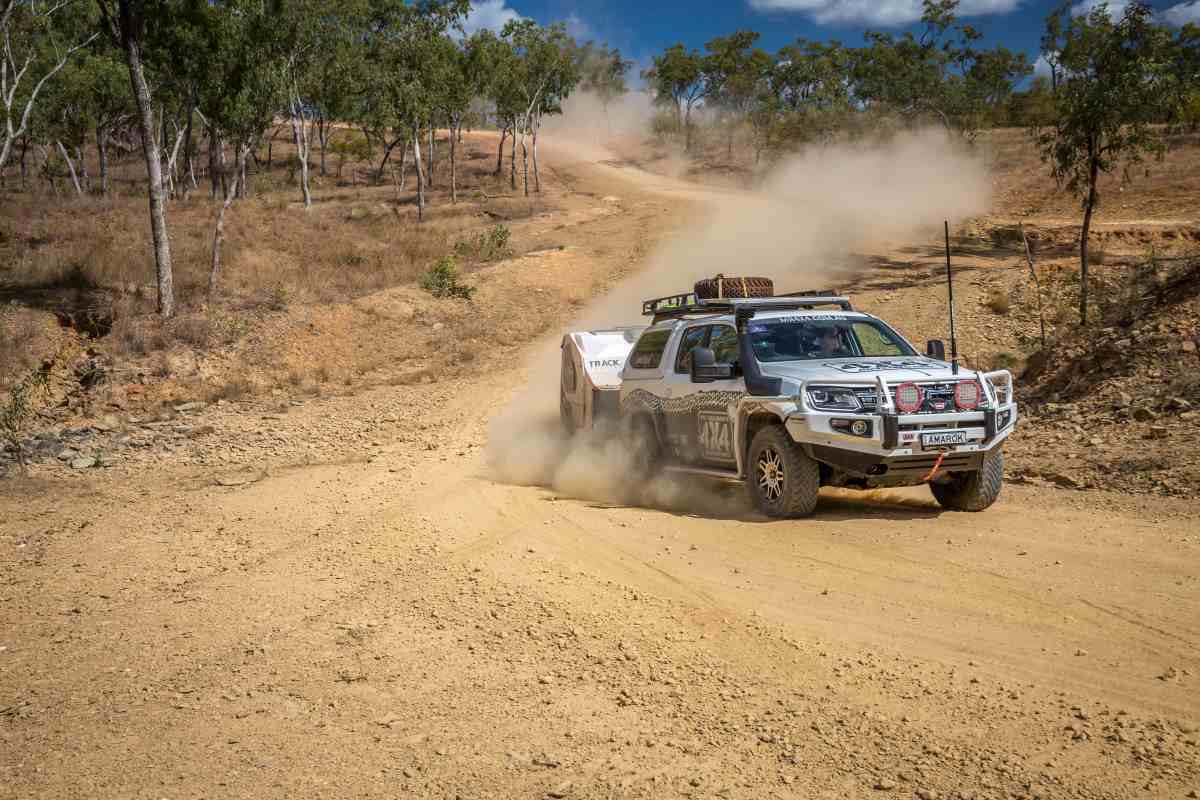
The Peninsula Development Road (PDR) is a rather infamous bit of road unto itself, running from Laura to the Tip, it sees its fair share of traffic. It’s around 66% bitumen these days, with more and more bitumen going in every year. That said, the further north you go, the less bitumen you see.
A few things you need to be aware of on the PDR: the corrugations, the dust holes, and the causeways. The dirt parts of the PDR get torn up, graded and flattened out every season, so if you go early, it’s usually a pretty good run. Any other time, chances are you’re going to see some pretty wild corrugations – some up to eight inches in height and carry on for kilometres on end.
Don’t kid yourself, your 4WD can and will rattle apart, irrespective of whether it’s brand-spanking new, or 25 years old. So plan for that eventuality, and make sure you check over the real important parts every morning when you’re packing up camp. Think wheel nuts, strut towers, control arms, and the like. If it’s directly in contact with the road, or attached to the suspension, it’s going through hell.
The dust holes on the other hand, jump out at you from nowhere, are deadly, and will swallow your four-wheel drive. Thankfully most of them have signs put up on them pretty quickly, so you’ll have some notice, but it’s worth keeping an eye out anyway. They’re generally full of bull dust, run about 50 metres long, and twice the width of your vehicle. If you happen across one, slow down, dodge it if it’s safe to do so, or take it real easy if you have to drive through it; just watch the lips on either side of the hole – some of the steps are a foot deep!
Speaking of lips, when you see a ‘dip’ or ‘causeway’ sign on the PDR, slow down! Some of the lips heading into and out of the causeways are rather aggressive. Suffice to say hitting one at 80km/h will see all four wheels a couple of feet off the ground, two busted shocks, a bent diff housing, and a 50C piece sized hole in the seat where your backside gripped up! Ask me how I know…
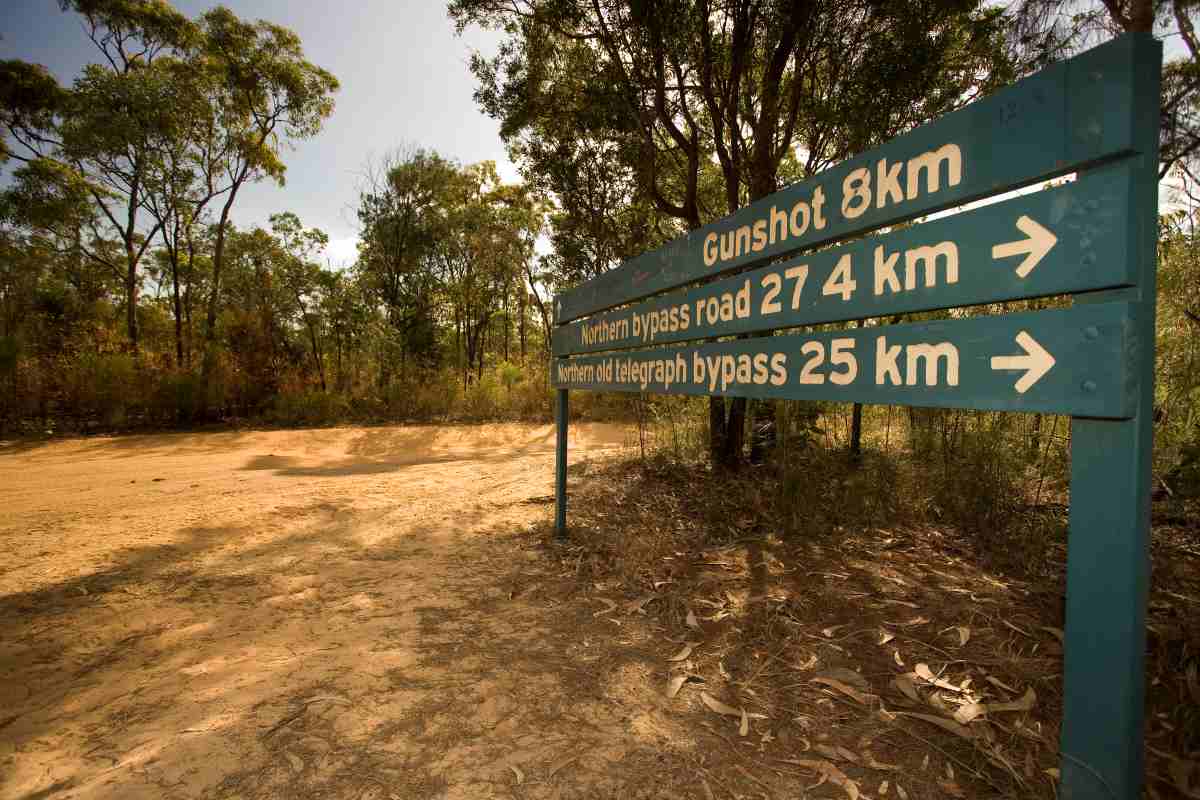
If you’re Russell Coight, you’ll want to take three litres, per day, per person, per man, per degree over 25 degrees, per kilometre on foot, in the winter months divide by two, plus another litre. For the rest of us, carry at least three litres per person per day, and to be extra safe, some water purification tabs to keep in the first aid kit.
Make sure you have a good spare. A 10-year-old, 20% tread, questionable quality tyre that’s been hanging on the back of your 4X4 for the last few years without a look in, probably isn’t the best idea. Check your spare, make sure it’s inflated and is in good repair.
Comms. Have them, use them. Keep an ear out on channel 40 for the trucks rolling up and down the PDR or have your unit on scan if you’re not in a convoy – chances are you’ll get good info on the roads and may save you some bother otherwise!
Make sure you’ve got plenty of dunny roll. Getting halfway up the Tele, and your bowels deciding last night’s green curry wasn’t the greatest idea, with only half a roll of dunny paper left is a real quick way to have a bad idea. Luckily, we’ve written a guide on how to poo when there’s no loo.
Something a lot of folks forget, is that you’re a guest up in the Cape. The local Aboriginal and Torres Strait Islander peoples have invited and welcomed us into their home with open arms, for us to enjoy it with them. So make sure you take your rubbish with you, don’t trash the joint, and we’ll all be welcomed back, to share with our kids and grandkids. All too often folks get up there and couldn’t care less. Don’t be that guy (or girl)!
No, not the shameful rubber variety that go on your feet, the ones with the big eyes and teeth! Most places where crocs have been spotted or are known to frequent are signposted – take heed. That said, there are some spots that aren’t signposted (Nolan’s Brook for example), where crocs have been sighted. So as soon as you’re north of Cairns, stay vigilant and always keep one eye on the water!
Unless you go real early or late in the season, chances are you’re going to run into other people on the Tele, at the Tip, and trying to cross the Jardine. Be prepared to be able to take your time with schedules, and not rush through anything. At the end of the day, we’re all up here on holidays, right? And above all else, have a bloody good time!
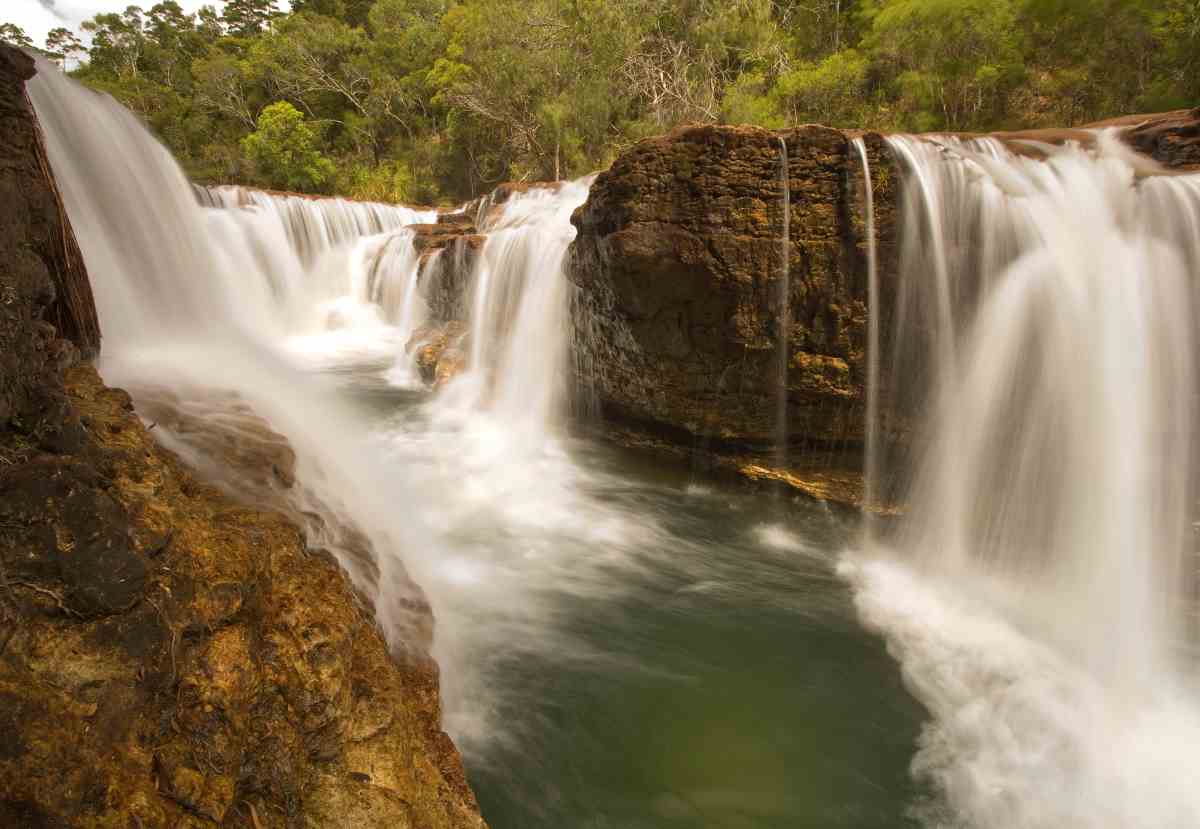
It’s really hard to limit the list to just five things. Honestly, we could list 500 and still not have enough space. That said, the vast majority of us will end up heading up the Cape on a timeframe – no open-ended holidays for us, unfortunately. So, where should you get to, and what should you see?
This one goes without saying. If you’re going this far north, you need to get to the top of this magic country of ours. Make sure you take the camera or at least a phone to get a happy snap!
On the northern part of the Tele Track you’ll find Fruit Bat, Eliot and Twin Falls. They’re all as speccy as the next, and you can happily swim at them all. Make sure you get here, and make sure you get a photo!
Located on the northern part of the Tele Track, Sam Creek is a smaller creek that has some rather gritty sand in it and camping areas on both sides. What makes this spot get on the list, is the water hole and waterfall. Not the one you’ll see as you drive across, but the one a touch further downstream. On the southern side of the creek, you’ll find a little walking track that heads off into the scrub – follow it. It’s worth it.
Once you’ve done the Tip, if you head out on Somerset Road toward the east, there is a great little spot called 5 Beaches. It runs down the east coast of the Tip, has some magic camping spots, and if you’re finding the heat and humidity overbearing, you’ll generally always have a solid easterly blowing in off the ocean.
Almost as iconic as getting to the Tip itself, Gunshot Creek is worth a look. Even if you just head into it, have a gander, then take the bypass road back out to the PDR (or take the chicken track around it). If you’ve got the time, it’s absolutely worth pulling up near Gunshot with a few tins, kicking back and watching the carnage – nice easy way to spend a day with free entertainment!
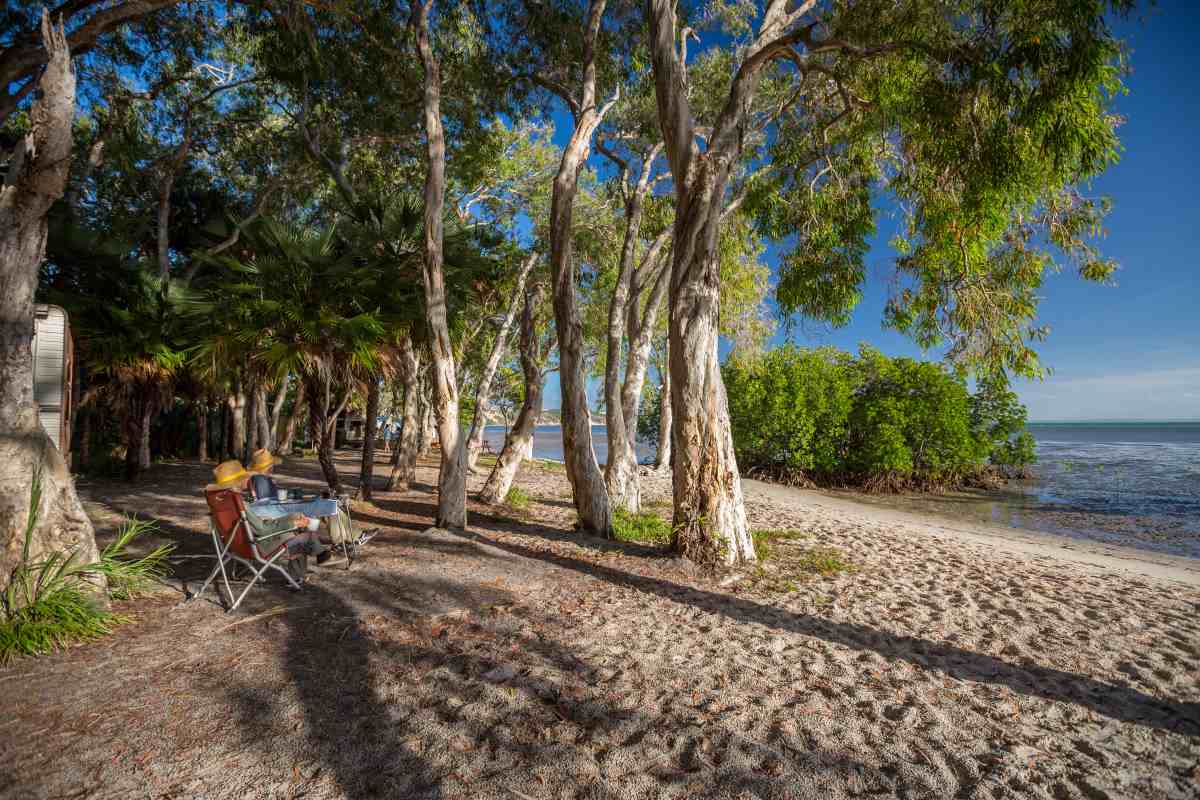
Up the Cape it’s pretty well open season on camping. You can, for the most part, camp wherever you like (besides the places that are signposted no camping), however there are a few spots that stand out, and well, if you’re not pulling up stumps somewhere stunning every night, why are you even going?
As we said above, Sam Creek is a magic spot to pull up stumps for the night. The swimming hole down river is absolutely amazing, and it’s usually pretty quiet. We’re not going to ping it on a map, go find it yourself!
If you’re heading up the Tele, a great spot to camp before you cross the Jardine, is at Nolan’s. The last ferry across the Jardine leaves at about 4pm. So if you’re not on a tight schedule, aim to get to Nolan’s by mid-arvo; it’s a great place for a swim and wash, plus you can sit back with a few cans and watch others cross it. Worth noting, it’s best to camp on the northern side of the creek, so you’ve not got to worry about crossing it first up the next morning.
Both Punsand Bay and Loyalty Beach have camping areas/caravan parks that have food, beer, shops and the like. Punsand does also have a pool and beers on tap, however Loyalty Beach is generally quieter – so it all depends on what you’re after.
This is the actual name of the beach on 5 Beaches Loop. The water is stunning, the sand is just about as white as you’ll find, plus there’s often a nice cool easterly blowing if the heat and humidity is getting to you.
This one is more of a transit camp than a speccy ‘Cape campsite’. Don’t get us wrong, if you want to put the hours in, you can do Bamaga to Cairns in a massive day – but it’s a solid 1000km run between the two. If you’re not into massive days in the saddle and want to enjoy the drive up and back, Archer River Roadhouse gets our vote. There’s a mint river and campground here, plus you’ve just gotta try the ‘Archer Burger’. You can thank us later!
Words by Wes Whitworth